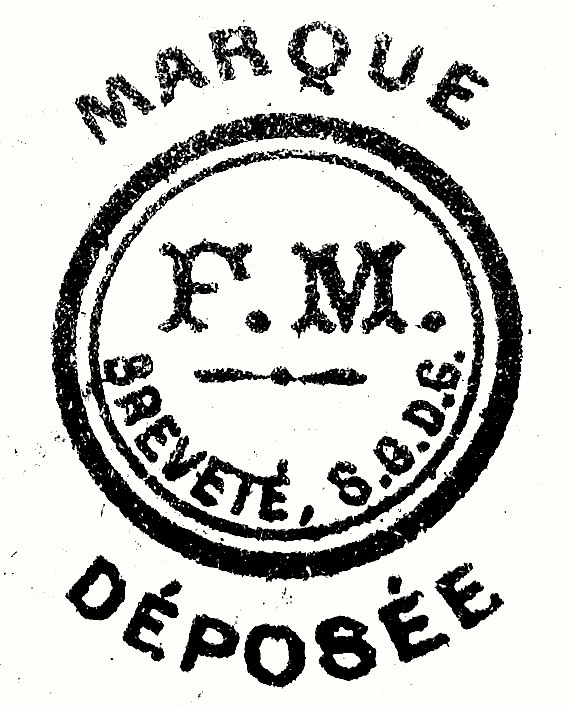I found an article in an old French technical magazine La Nature from 1894 about a tin boat made by Martin.
This nice piece is put in motion by the well-known Martin “rubber band” method, the motion is done by a winding handle at the front of the boat, under the boat is, in the tube, the “rubber band” that goes to the movement mechanism.
Produced from 1893
Product number 125 (In the books known to us, this toy has the Martin product number 43 which is not correct. )
Hand lacquered
Mechanism: Rubber band
length approx 27.5 cm (10.63) inches
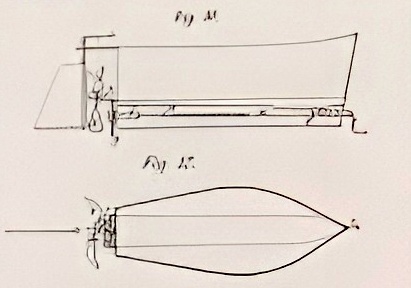
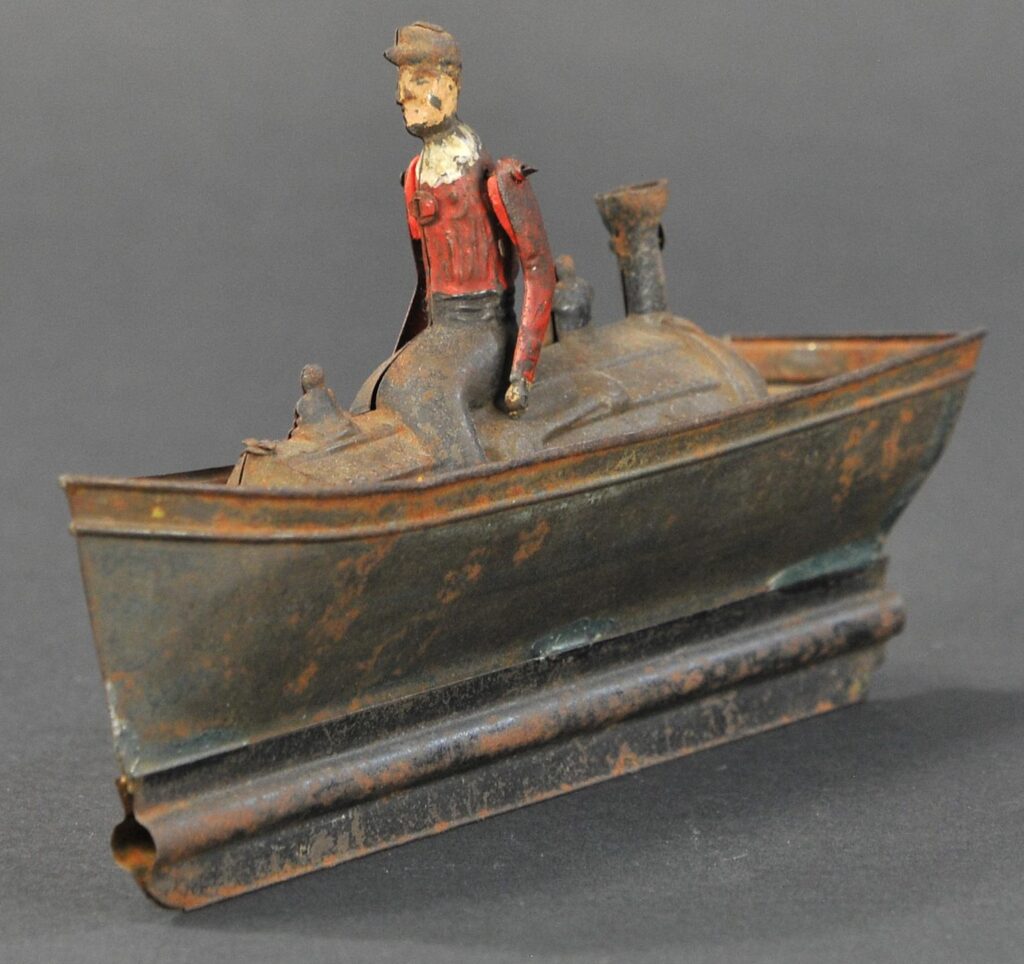
On display in the Toy Museum Soltau (“Spielmuseum Soltau”) in Germany
Image courtesy of Bertoia Auctions
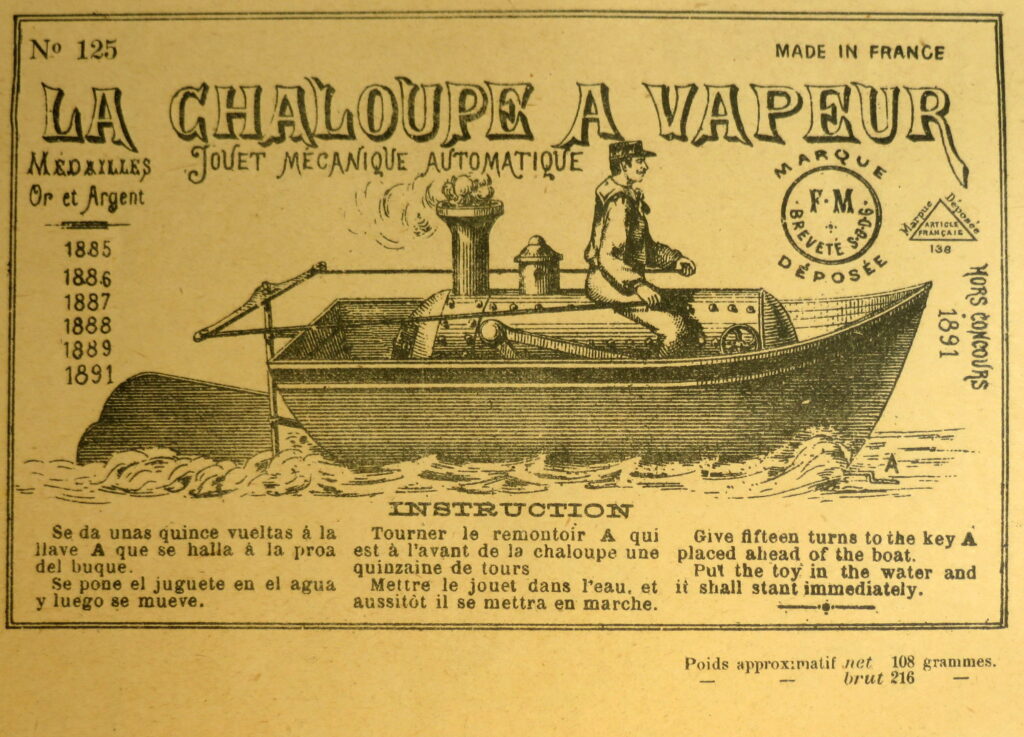
Original article and drawing’s from the magazine “La Nature 1894” Source: (Cnum – Digital Conservatory of Arts and Crafts – http://cnum.cnam.fr)
SCIENTIFIC TOYS
THE THRUST RUDDER
Looking at it closely, or is almost always astonished, and often amazed at the ingenuity displayed in the construction of any toy.
The child who breaks his rattle has no idea that he sometimes destroys a wonder, and Mum is far from even thinking of it. It only cost fifteen sous, they say.
But it is specified by the modieity of its price that the mechanical toy is generally a tour de force of combination.
To reduce everything to the maximum of simplicity from the point of view of the manufacture and assembly of the parts, such is the condition under which a toy will not be sold, because it will be too expensive.
Among the new creations of the last day of the year, we will choose one that is typical: the boat with propellant rudder.
Whoever imagined it must have often observed the fish, seen the way in which they throw right and left a blow of the tail which makes them move forward, and he undoubtedly sought to imitate this movement in the toy of which we speak.
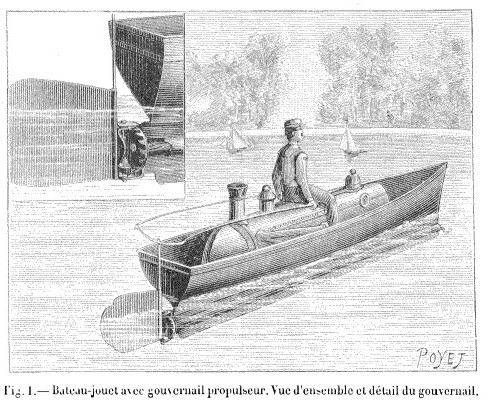
Here is (fig. I) our little boat
At first glance, one thinks to see a boiler and a propeller, with a pill oddly sitting down with his steam engine and holding the rudder ropes. However, that is not the mechanism.
The pilot only serves to amuse baby, the boiler too.
The whole engine is in the keel; it is a simple rubber thread concealed in a channel, and fixed in the center of a toothed wheel; ‘at the other end, it is attached to a lever which rests on the two notches of a ratchet
The toothed wheel is nothing more than an escape wheel, and not the least; it is an anchor escapement of which the rudder head forms the counterpart.
Under the alternating impact of the teeth of the wheel (fig. I detail) between two stops placed to the right and to the left of the axis of the gourernail, the latter begins to perform oscillations which communicate its movement to the boat.
By what mechanism is the thrust carried out?
It is easy to realize this by analyzing the movement of the gourernail. Oscillations around the axis can be likened to periodically interrupted rotation.
However, this rotation results in a centrifugal movement of the water, and, consequently, a reaction on the rudder, the component of which along the axis of the boat is directed forward.
But there is another cause, probably dies effective, of propulsion.
If the rudder were to execute movements with symmetrical speeds, it would experience a thrust forward as it approached its mean position, and a retrograde thrust of the same mean value from that point on.
But this is not the case.
When the rudder leaves the escape wheel, the latter falls back with force on the second stop, and loses part of its kinetic energy there, immediately imparting a certain speed to the rudder; it then acts on the maximum lever arm, but when the rudder passes through its equilibrium position, the stop is already tilted a little; it slips away more and more, until the loose tooth is caught.
The speed of the rudder therefore decreases from the moment it begins to throw water back, until it reaches the end of its course.
However, the resistance of water is roughly proportional to the square of the speed of the moving body; therefore the pressures are stronger from back to front than in the reverse direction.
On average, this results in a propulsive force for progression which makes our little boat move forward.
We compared it earlier to a eur. View ecti.mblo and detail of the fish rudder; the analogy is real, but it is not perfect.
The rigid rudder employed as a propellant is far from being advantageous, since its action depends above all on a difference in speed and can only be very slight, and we know that, in nature, actions are generally very well combined.
If, instead of a rigid rudder, an articulated rudder is adopted (fig. 2), the apparatus becomes more advantageous; attempts in this direction have been made in the past.
The thruster consists, in this combination, of two parts A and B connected by a vertical axis.
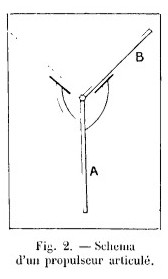
Plane A carries, on the right and on the left, two stoppers which limit the movement of B.
As soon as this last plan ceased to act as a propellant.
A goes back, and resumes B in the symmetrical position of the one he occupied.
We can now replace the single joint with a series of hinges, each of which leaves the plane it carries a certain degree of freedom. We thus manage to build a propellant similar to the tail of the fish, of which our small boat shows the mode of action by an elementary mechanism of extreme simplicity.

